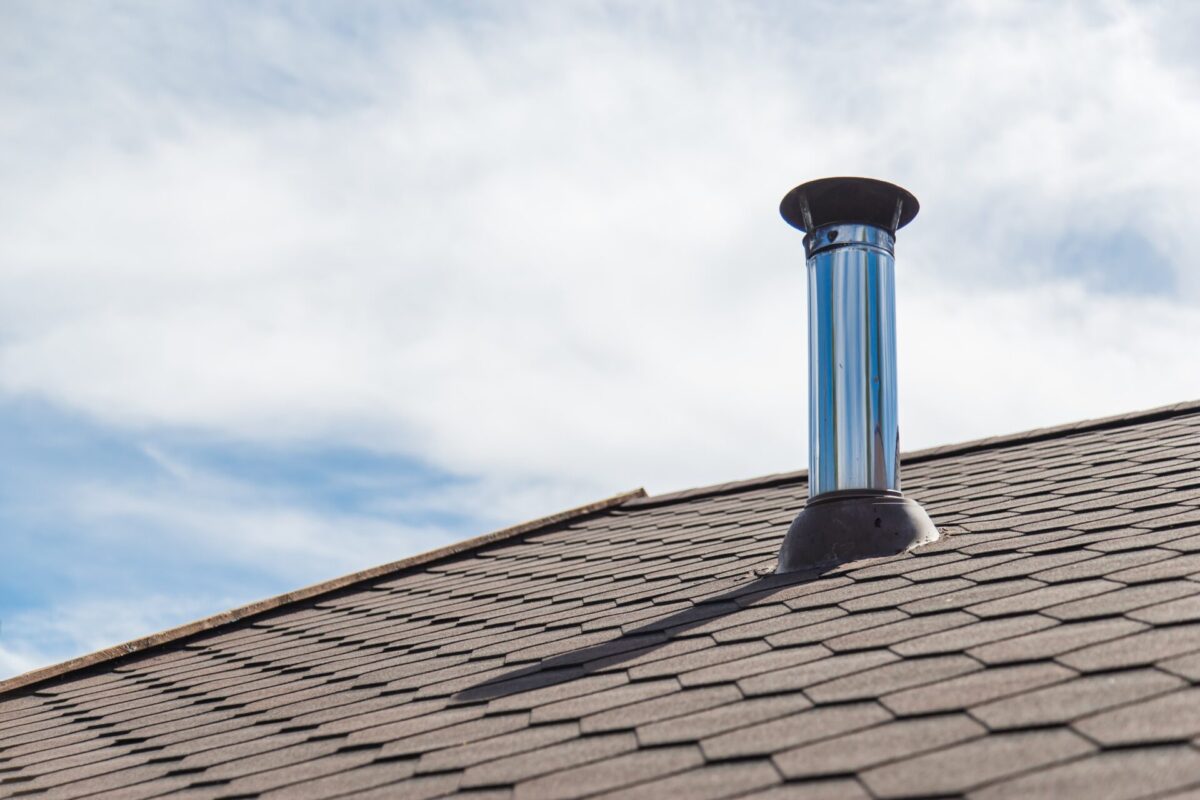Understanding the Different Flashing Types in a Roof Construction

Posted on September 29, 2023 by Phillip Camerer
Roof flashing is essential to a roofing system that protects buildings from water damage. It is a barrier to prevent water from seeping into vulnerable areas, such as joints, intersections, and transitions on the roof. Today’s blog explores what flashing is, its purpose, and why it is essential for roofing.
Flashing Definition
Flashing are thin strips or sheets of metal or other durable materials strategically installed in areas where the roof is susceptible to water penetration. These areas typically include chimneys, vents, skylights, valleys, and other points where two different surfaces meet.
Purpose of Flashing in Roof Construction
The primary purpose of flashing is to create a watertight seal that directs water away from vulnerable areas and guiding it safely off the roof’s surface.
Flashing prevents moisture infiltration from leading to costly damages such as leaks, rotting wood structures, mold growth, and compromised insulation. By effectively sealing these areas, flashing helps protect against wind-driven rain and snow runoff.
Various Types of Flashing Used on a Roof
When it comes to roofing, flashing plays a crucial role in preventing water leakage and protecting vulnerable areas of the roof. There are several types of flashing used, each serving a specific purpose. Let’s explore some of the most common types:
- Step Flashing
- Chimney Flashing
- Valley Flashing
- Drip Edge Flashing
- Vent Pipe Flashing
1. Step Flashing
Typically, this flashing gets used along the edges where a sloped roof intersects with a vertical wall. It consists of small, L-shaped metal pieces that are layered and interwoven with shingles to create a watertight barrier.
Step flashing gets layered in a step-like pattern during installation to create a watertight barrier. Each piece is placed horizontally over the shingles with one end tucked under the shingle above it and extending vertically up the adjacent surface. That overlapping configuration allows water to flow down and away from vulnerable areas, preventing moisture from seeping into the underlying structure.
2. Chimney Flashing
As the name suggests, chimney flashing is specifically designed for chimneys. There are two types of chimney flashing: base and counter. Base flashing is commonly made of metal, such as aluminum or copper, and it is installed where the chimney and roof intersect, creating a watertight seal.
On the other hand, counter flashing is also made of metal and is installed over the base flashing. It serves as an additional layer of defense against water intrusion by covering up the edges of the base flashing. Counter flashing is typically embedded into mortar joints or secured with fasteners to ensure a snug fit.
In addition to base and counter flashings, is chimney step flashing. These pieces of metal get layered along each row of shingles on a sloped roof.
3. Valley Flashing
Installed in the valleys or low points where two sloping roof sections meet, valley flashing can be categorized into two main types: open and closed. Open valley flashing is a traditional method of exposing the metal flashing material in the valley, creating a visible channel for water runoff. On the other hand, closed valley flashing involves covering the metal flashing with roofing materials such as shingles or tiles, concealing it from view.
4. Drip Edge Flashing
Drip edge flashing is typically installed along the eaves of a roof to provide an extra layer of protection against water damage. The installation process for drip edge flashing involves placing it under the shingles or roofing material and securing it with nails or screws. Additionally, drip edge flashing protects against wind-driven rain and ice dams.
5. Vent Pipe Flashing
Vent pipe flashing is used around pipes that protrude through the roof, such as plumbing vents or exhaust pipes for HVAC systems. The installation process of vent pipe flashing typically involves several steps.
Firstly, the old flashing needs to be removed, ensuring any debris or old sealant is thoroughly cleaned. Next, a new vent pipe boot or flashing is positioned over the vent pipe, ensuring a snug fit. The boot should have a flexible base that can conform to different roof pitches and materials.
The Vital Role of Properly Installed Flashings in Maintaining a Leak-Free Roof System
In conclusion, properly installing flashing plays a vital role in maintaining a leak-free roof system. Flashings are essential components that help prevent water from roof penetrations and ensure the roof’s integrity. It’s necessary to hire a roofing professional with experience in installing flashing for roof performance to be leak-free.
Properly installed flashing creates a seamless barrier that prevents water from seeping inside a home at vulnerable locations such as:
- Roof Joints
- Chimneys
- Skylights
- Vents
- Walls Seams
Flashing in these areas helps maintain the roof’s structural integrity and protects against costly water damage. In addition, by preventing water intrusion, you protect your home from other potential issues, such as mold growth, rotting wood, and structural damage.Hire a qualified roofing professional at Phillip Camerer Roofing by calling (417) 451-5479 to schedule a free in-home consultation.
